I had to do something similar for a MRI data enhancement:
Probably the code can be optimized but it works as it is.
My data is 3 dimension numpy array representing an MRI scanner. It has size [128,128,128] but the code can be modified to accept any dimensions. Also when the plane is outside the cube boundary you have to give the default values to the variable fill in the main function, in my case I choose: data_cube[0:5,0:5,0:5].mean()
def create_normal_vector(x, y,z):
normal = np.asarray([x,y,z])
normal = normal/np.sqrt(sum(normal**2))
return normal
def get_plane_equation_parameters(normal,point):
a,b,c = normal
d = np.dot(normal,point)
return a,b,c,d #ax+by+cz=d
def get_point_plane_proximity(plane,point):
#just aproximation
return np.dot(plane[0:-1],point) - plane[-1]
def get_corner_interesections(plane, cube_dim = 128): #to reduce the search space
#dimension is 128,128,128
corners_list = []
only_x = np.zeros(4)
min_prox_x = 9999
min_prox_y = 9999
min_prox_z = 9999
min_prox_yz = 9999
for i in range(cube_dim):
temp_min_prox_x=abs(get_point_plane_proximity(plane,np.asarray([i,0,0])))
# print("pseudo distance x: {0}, point: [{1},0,0]".format(temp_min_prox_x,i))
if temp_min_prox_x < min_prox_x:
min_prox_x = temp_min_prox_x
corner_intersection_x = np.asarray([i,0,0])
only_x[0]= i
temp_min_prox_y=abs(get_point_plane_proximity(plane,np.asarray([i,cube_dim,0])))
# print("pseudo distance y: {0}, point: [{1},{2},0]".format(temp_min_prox_y,i,cube_dim))
if temp_min_prox_y < min_prox_y:
min_prox_y = temp_min_prox_y
corner_intersection_y = np.asarray([i,cube_dim,0])
only_x[1]= i
temp_min_prox_z=abs(get_point_plane_proximity(plane,np.asarray([i,0,cube_dim])))
#print("pseudo distance z: {0}, point: [{1},0,{2}]".format(temp_min_prox_z,i,cube_dim))
if temp_min_prox_z < min_prox_z:
min_prox_z = temp_min_prox_z
corner_intersection_z = np.asarray([i,0,cube_dim])
only_x[2]= i
temp_min_prox_yz=abs(get_point_plane_proximity(plane,np.asarray([i,cube_dim,cube_dim])))
#print("pseudo distance z: {0}, point: [{1},{2},{2}]".format(temp_min_prox_yz,i,cube_dim))
if temp_min_prox_yz < min_prox_yz:
min_prox_yz = temp_min_prox_yz
corner_intersection_yz = np.asarray([i,cube_dim,cube_dim])
only_x[3]= i
corners_list.append(corner_intersection_x)
corners_list.append(corner_intersection_y)
corners_list.append(corner_intersection_z)
corners_list.append(corner_intersection_yz)
corners_list.append(only_x.min())
corners_list.append(only_x.max())
return corners_list
def get_points_intersection(plane,min_x,max_x,data_cube,shape=128):
fill = data_cube[0:5,0:5,0:5].mean() #this can be a parameter
extended_data_cube = np.ones([shape+2,shape,shape])*fill
extended_data_cube[1:shape+1,:,:] = data_cube
diag_image = np.zeros([shape,shape])
min_x_value = 999999
for i in range(shape):
for j in range(shape):
for k in range(int(min_x),int(max_x)+1):
current_value = abs(get_point_plane_proximity(plane,np.asarray([k,i,j])))
#print("current_value:{0}, val: [{1},{2},{3}]".format(current_value,k,i,j))
if current_value < min_x_value:
diag_image[i,j] = extended_data_cube[k,i,j]
min_x_value = current_value
min_x_value = 999999
return diag_image
The way it works is the following:
you create a normal vector:
for example [5,0,3]
normal1=create_normal_vector(5, 0,3) #this is only to normalize
then you create a point:
(my cube data shape is [128,128,128])
point = [64,64,64]
You calculate the plane equation parameters, [a,b,c,d] where ax+by+cz=d
plane1=get_plane_equation_parameters(normal1,point)
then to reduce the search space you can calculate the intersection of the plane with the cube:
corners1 = get_corner_interesections(plane1,128)
where corners1 = [intersection [x,0,0],intersection [x,128,0],intersection [x,0,128],intersection [x,128,128], min intersection [x,y,z], max intersection [x,y,z]]
With all these you can calculate the intersection between the cube and the plane:
image1 = get_points_intersection(plane1,corners1[-2],corners1[-1],data_cube)
Some examples:
normal is [1,0,0] point is [64,64,64]

normal is [5,1,0],[5,1,1],[5,0,1] point is [64,64,64]:

normal is [5,3,0],[5,3,3],[5,0,3] point is [64,64,64]:

normal is [5,-5,0],[5,-5,-5],[5,0,-5] point is [64,64,64]:

Thank you.





